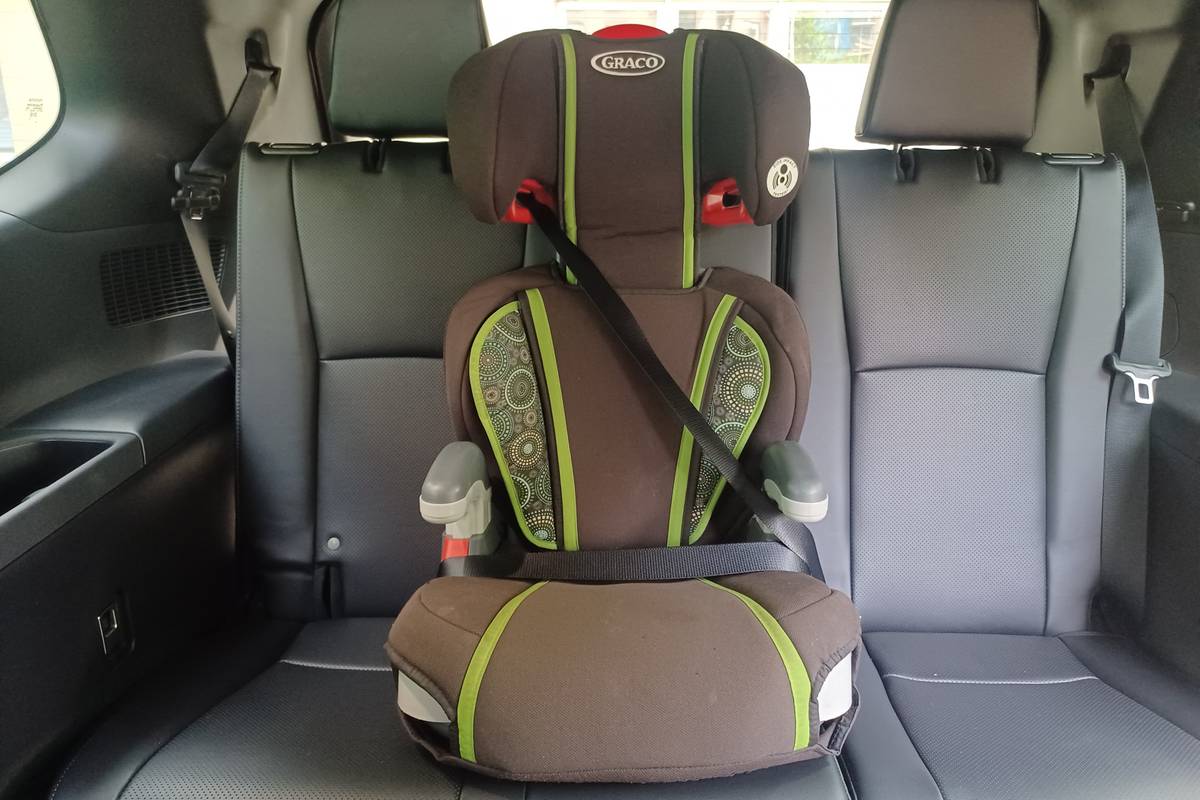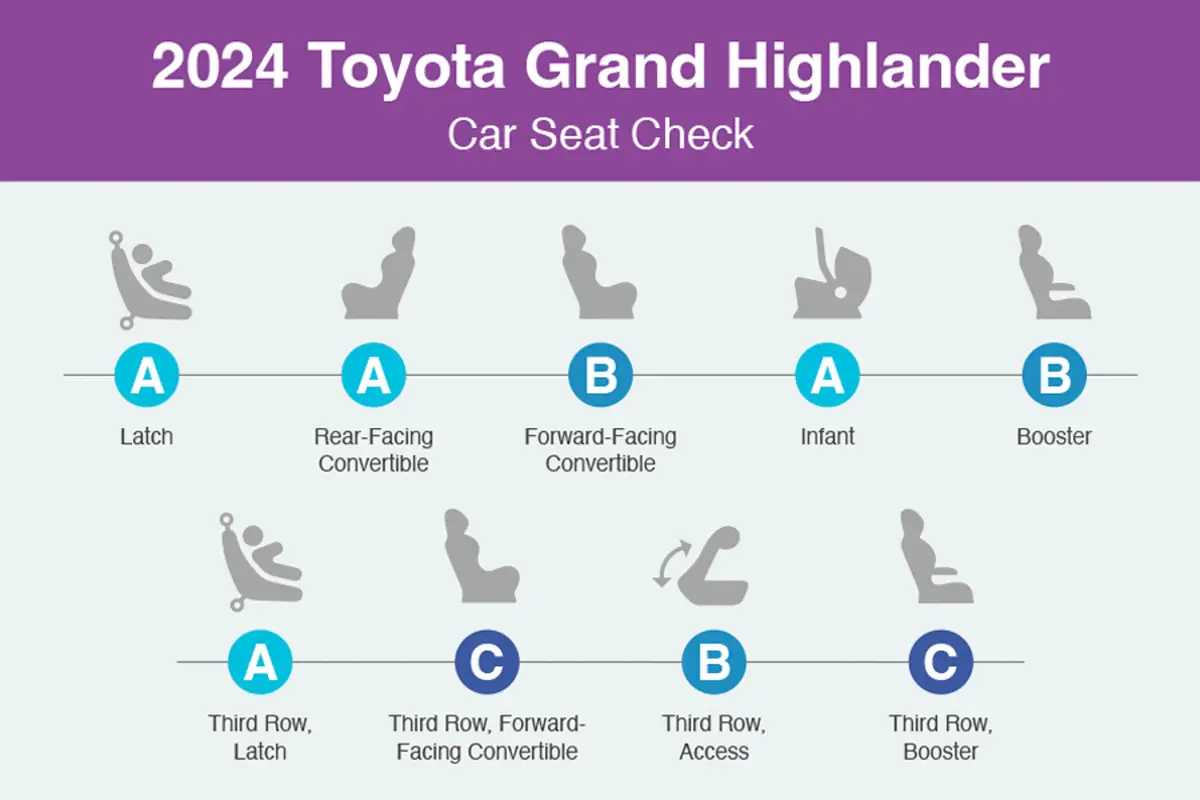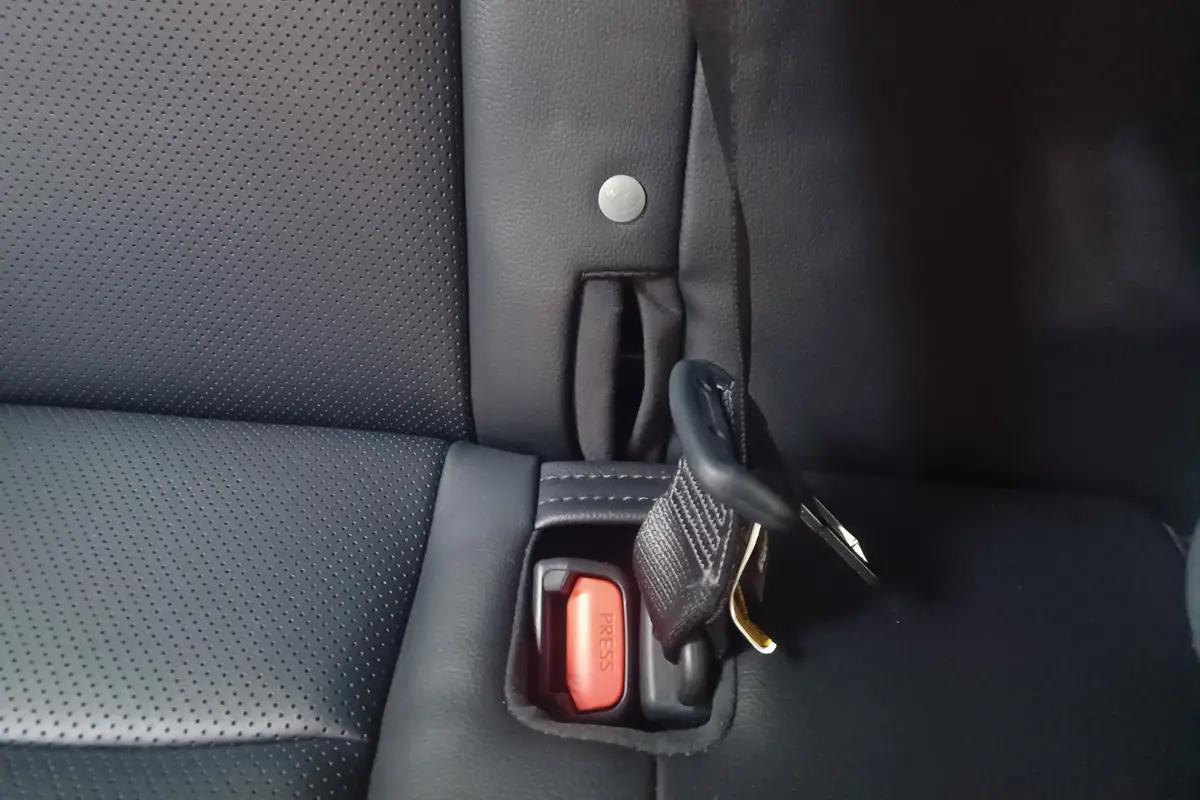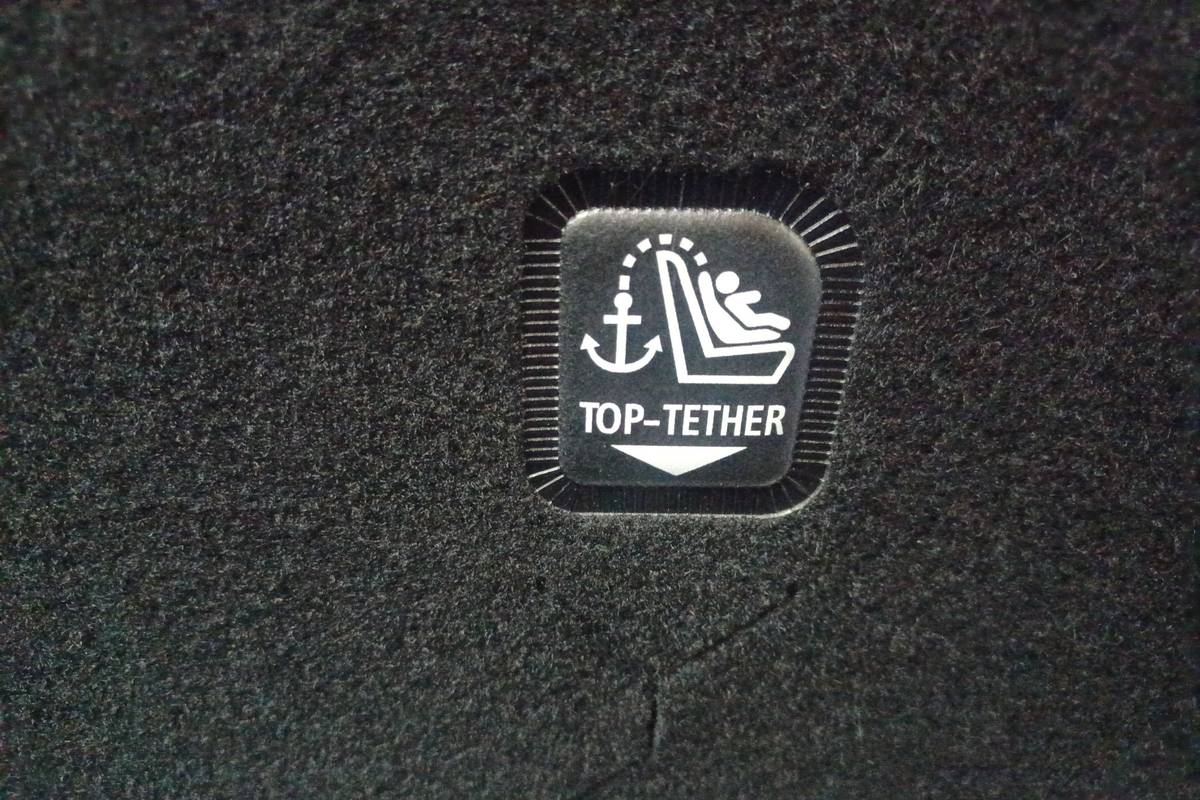How Do Car Seats Fit in a 2024 Toyota Grand Highlander?


The verdict: The three-row Toyota Grand Highlander debuted for 2024 with more cargo space and passenger room than the regular Highlander. In our Car Seat Check, the Grand Highlander’s second row earned good scores thanks to ample legroom and easy-access lower anchors. In the third row, the grades weren’t as good due to fixed head restraints that interfered with booster and car-seat fit. We tested a seven-passenger version in the hybrid’s XLE trim.
Does it fit three car seats? No.
Take a look at how the Latch system and each car seat scored below in our Car Seat Check of the 2024 Toyota Grand Highlander.
Related: Search Car Seat Checks

A Grade
- Latch: In the second row, the two sets of lower anchors are exposed for easy access and connection. Two top tether anchors sit on the seatbacks; they’re also clearly marked but are buried in the seatback carpet, requiring a bit of digging to connect.
- Infant seat: Latch connection was easy, and our 5-foot-6-inch front passenger had ample legroom in front of the car seat.
- Rear-facing convertible: As with the infant seat, installation was problem-free, and front-passenger legroom was not impacted.
- Third-row Latch: The third row has one set of lower anchors on the passenger side; they’re in slits in the seat and are easy to use. Two sets of top tether anchors sit on the passenger side and middle seatbacks; they’re clearly marked, but like the second-row setup, the anchors are buried in the seatback.

B Grade
- Forward-facing convertible: After removing the head restraint, the forward-facing convertible fit well in the second row. We had no trouble connecting to the lower anchors, but the top tether anchor sits within the seatback carpet, requiring some digging to connect.
- Booster: After removing the head restraint, the booster fit well. The second row’s floppy buckles could make it difficult for kids to buckle up, however.
- Third row access: The second-row seats tilt and slide forward with ease for a path to the third row, though they can’t be tilted with a car seat installed. The size of the opening is decent. People can also climb in between the captain’s chairs to access the third row, though that opening is smaller; a seatback lever in the third row makes it easy for those passengers to get themselves out.

C Grade
- Third-row booster: The fixed head restraint pushes the booster off the seatback, and it should fit flush against it. Although the middle seat’s head restraint is removable, that’s also not a great place to put the booster because the booster is wider than the seat bottom cushion. This causes it to ride over the buckle and take up seat space of the left and right occupant. The middle seat’s buckle also comes down from the ceiling, blocking the driver’s rear view when in use. The buckles also sink into pockets, complicating access and use.
- Third-row forward-facing convertible: Connecting to the lower anchors was easy, but connecting to the top tether anchor in the seatback requires a bit of digging. As with the booster, the fixed head restraint is in the way. You can install the convertible in the middle position instead, but again, the seatbelt comes down from the ceiling, and there’s not enough room in the middle position.
Grading Scale
A: Plenty of room for the car seat and the child; doesn’t impact driver or front passenger legroom. Easy to find and connect to Latch and tether anchors. No fit issues involving head restraint or seat contouring. Easy access to the third row.
B: One room, fit or connection issue. Some problems accessing the third row when available.
C: Marginal room plus one fit or connection issue. Difficult to access the third row when available.
D: Insufficient room, plus multiple fit or connection issues.
F: Does not fit or is unsafe.
About Cars.com’s Car Seat Checks
Editors Jennifer Geiger and Jennifer Newman are certified child safety seat installation technicians.
For the Car Seat Check, we use a Chicco KeyFit 30 infant-safety seat, a Graco Contender 65 convertible seat and Graco TurboBooster seat. The front seats are adjusted for a 6-foot driver and a shorter passenger. The three child seats are installed in the second row. The booster seat sits behind the driver’s seat, and the infant and convertible seats are installed behind the front passenger seat.
We also install the forward-facing convertible in the second row’s middle seat with the booster and infant seat in the outboard seats to see if three car seats will fit; a child sitting in the booster seat must be able to reach the seat belt buckle. If there’s a third row, we install the booster seat and a forward-facing convertible. Learn more about how we conduct our Car Seat Checks.
Parents should also remember that they can use the Latch system or a seat belt to install a car seat, and that Latch anchors have a weight limit of 65 pounds, including the weight of the child and the weight of the seat itself.
Cars.com’s Editorial department is your source for automotive news and reviews. In line with Cars.com’s long-standing ethics policy, editors and reviewers don’t accept gifts or free trips from automakers. The Editorial department is independent of Cars.com’s advertising, sales and sponsored content departments.

News Editor Jennifer Geiger joined the automotive industry in 2003, much to the delight of her Corvette-obsessed dad. Jennifer is an expert reviewer, certified car-seat technician and mom of three. She wears a lot of hats — many of them while driving a minivan.
Featured stories



